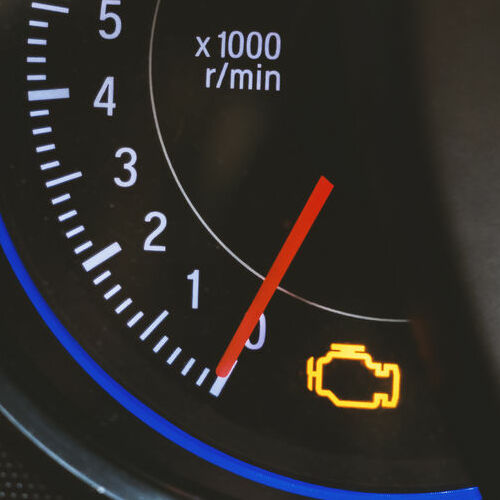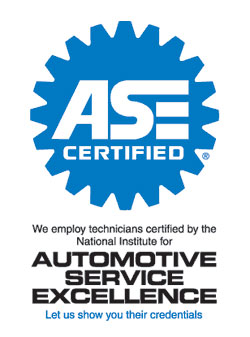
It may look pretty cool to see all the lights on your car’s engine come on at the same time, but each light is an indicator you may have problems, like the check engine light. Many car owners don’t know what the check engine light means and will keep driving until the car just comes to a complete stop.
So, just what does that check engine light mean?
On cars manufactured today, the check engine light is the computer’s way of telling you something is wrong with the engine or transmission. There can be a variety of things within these two components that could cause this.
What is the most common reason for the check engine light to illuminate?
There can be a simple issue like the gas cap being bad or loose. It can also be a more complex and serious matter inside the engine or transmission. In addition to the gas cap being the cause for an illuminated check engine light, other possible problems are:
- Bad Oxygen Sensor
A bad oxygen sensor will trigger the check engine light. The oxygen sensor, also referred to as the O2 sensor, measures the unburnt oxygen in the car’s exhaust system and sends that information to the OBC (onboard computer) that regulates the air and fuel mixture entering the cylinders. If this sensor is bad, the car burns more gas than necessary.
- Bad Catalytic Converter
The catalytic converter is a part of the exhaust system and when it is failing or is gone, the carbon monoxide that is generated during the process of turning it into carbon dioxide. An illuminated check engine light indicates the car should be inspected, making sure this part is in place and testing it.
- Bad Spark Plug or Ignition Coil
The ignition coil is what generates electricity for the spark plugs, causing the engine to start and the air and fuel to mix before going into the cylinders. When the ignition coil or the spark plugs are bad, it illuminates the check engine light. If the spark plug wires are bad, this can trigger the check engine light too.
- Bad Mass Airflow Sensor
The MAF (mass airflow sensor) monitors the amount of air entering the engine as a part of the engine management system. This helps a car adjust to altitude changes and when it is failing, the car will have a rough idle, can be hard to start, and affects how the gas pedal reacts. The gas mileage decreases and the car may stall while sitting at a light.
- A Vacuum Leak
The vacuum system in a car engine has a lot of different functions. The brakes are vacuum-operated, and the emission system is affected by the vacuum system by routing the fumes after the gasoline evaporates through the engine.
What is the first thing to check when the check engine light comes on?
Check the gas cap. A loose or missing gas cap allows a vapor leakage which triggers the check engine light. Immediately replacing the cap may not turn the light off, you may need to let it sit overnight before driving the car.
Is it OK to drive with the check engine light on?
As long as it starting and running, yes, you can keep driving a car with an illuminated check engine light. But it isn’t recommended to drive any further than needed to get to a mechanic. You can check the gas cap yourself, but anything more than that should be inspected by a trained mechanic.
Why is the engine light on but the car still runs fine?
Because the OBC (onboard computer) is working overtime! Even if your car is running okay with the check engine light illuminated, that typically doesn’t mean there isn’t anything wrong. It is still recommended to have a mechanic inspect the car and eliminate any possibilities. The OBC will keep working overtime to compensate for whatever the problem may be, but eventually, even the computer will quit working.
How bad is a solid check engine light?
A solid check engine light is typically a minor issue, like the gas cap or spark plugs. A flashing check engine light is associated with more severe issues like:
- Engine Misfiring
- Fuel Injector clogged or damaged
- EGR Valve clogged or damaged
- Insufficient Air getting to the engine
- Ignition Coil or Spark Plugs Failing
- Alternator or Battery Failing
In Closing
Next to the gasoline, the next most common product needed by an engine is the motor oil. While the gas gauge will tell you that you need gasoline, the check engine light can be triggered when the car is low on oil, or completely out of oil. Without oil, the internal parts of the engine will begin rubbing together, causing friction, and eventually quit altogether.


